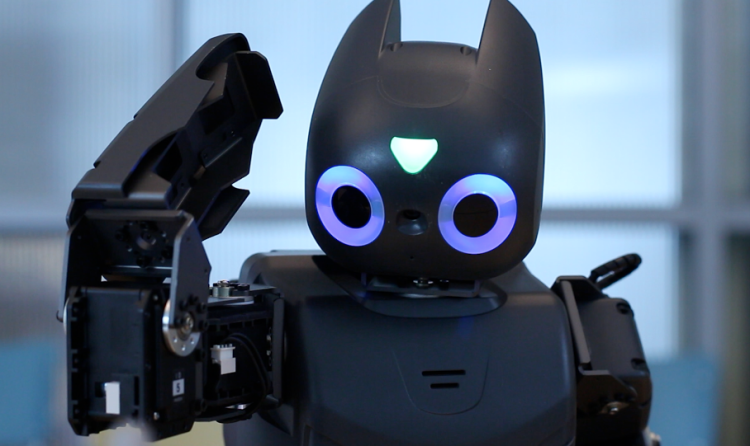Researchers at Georgia Tech are enlisting humanoid robots to play Angry Birds with the help of kids suffering from motor-skill and cognitive disabilities.
Kids rehabilitating from these types of disabilities generally perform a series of repetitive and often boring motions as a part of their treatment. To make this task less of a chore and to gather information about social bots, researchers paired kids with a humanoid robot and a tablet and asked kids to teach the robot how to play the one-time mobile hit.
The study revealed that kids on average spent nearly a half an hour playing with the robot compared with just nine minutes when the patients were asked to play on their own with an adult watching nearby. And kids were more inclined to interact with the robot and make eye contact — a lot more. Forty percent interacted with the robot, while only 7 percent involved the adult. That means the robot is getting kids to engage more with their rehabilitation activities, which could ultimately help them improve motor skills and mental capabilities.
Professor Ayanna Howard says the idea behind the study is to teach robots to conduct therapy sessions by themselves. In theory a clinician would be able to train a robot on the various activities it should focus on with a child. While the child is playing with the robot, “the robot will subtly take control of the session. It’s really slight,” says Howard. This portion of the study is still ongoing, but if Howard and her researchers succeed it means therapy could more easily be done everyday at home, instead of once a week with a clinician.
The robot watches and records the players tactics, taking note of where fingers start and stop and how objects move onscreen in relation to one another, all while tracking a players’ success. Then when the robot takes its turn, it replicates the child’s movements, dancing and chirping when it wins points and sadly shaking its head when it loses.
“One way to get robots more quickly into society is to design them to be flexible for end users,” said Hae Won Park, Howard’s postdoctoral fellow working closely on the project. “If a robot is only trained to perform a specific set of tasks and not able to learn and adapt to its owner or surroundings, its usefulness can become extremely limited.” An important point as commercial level social robots increasingly become a reality.
Last month Japanese company Softbank announced it will release its humanoid robot, capable of conversation and dancing, for purchase in 2015.
Researchers at Georgia Tech plan to expand the robot’s repertoire to include mobile games like the puzzler Candy Crush Saga and the endless runner ZyroSky. They presented their findings at the Rehabilitation Engineering and Assistive Technology Society of North America (RESNA) 2014 Annual Conference in Denver in June.
VentureBeat's mission is to be a digital town square for technical decision-makers to gain knowledge about transformative enterprise technology and transact. Learn More

